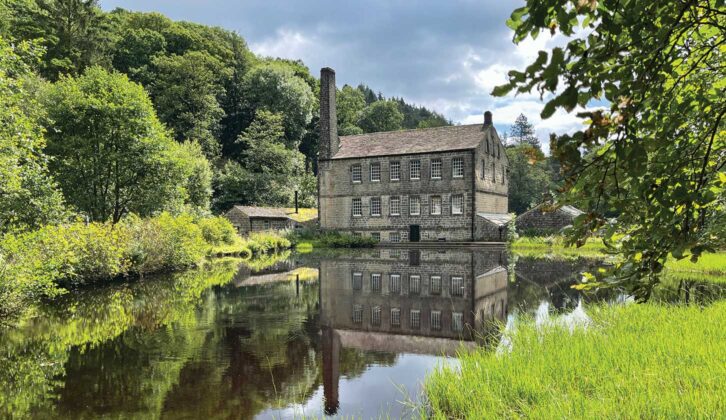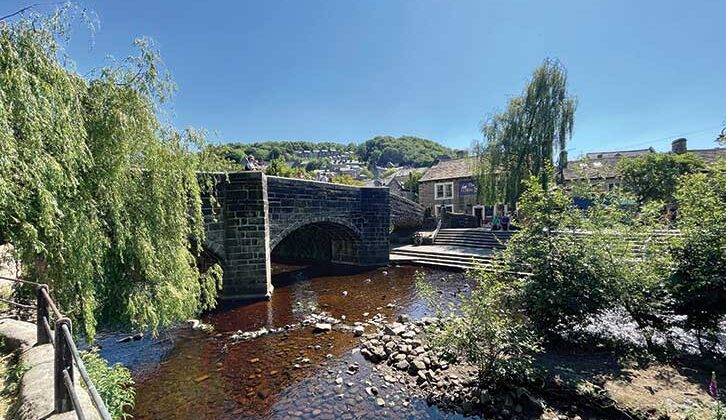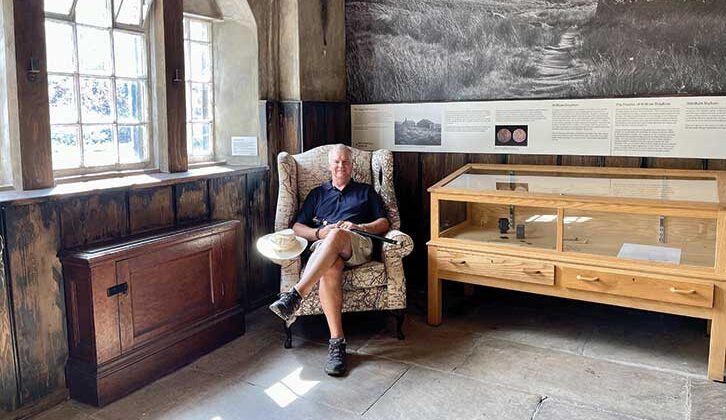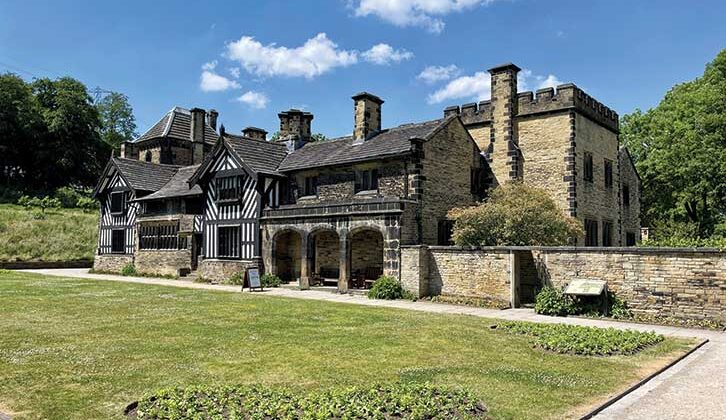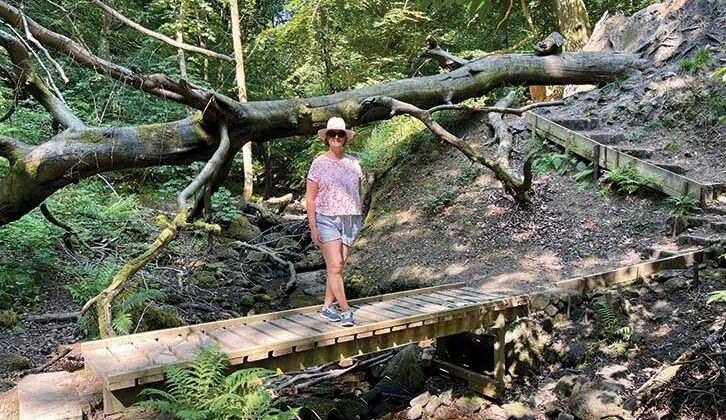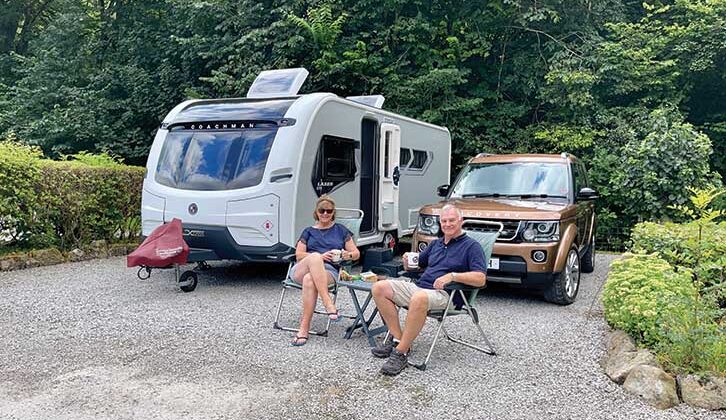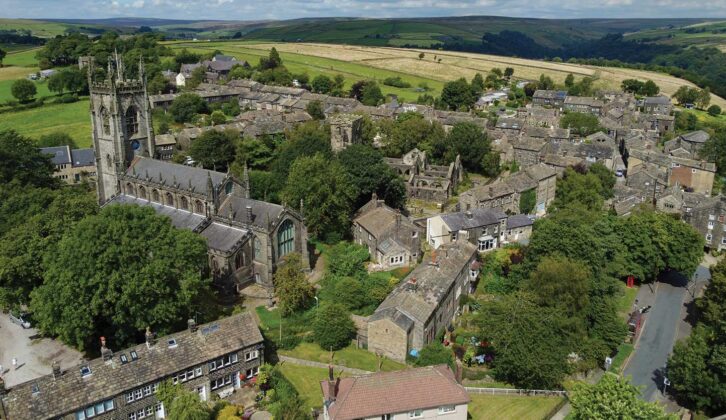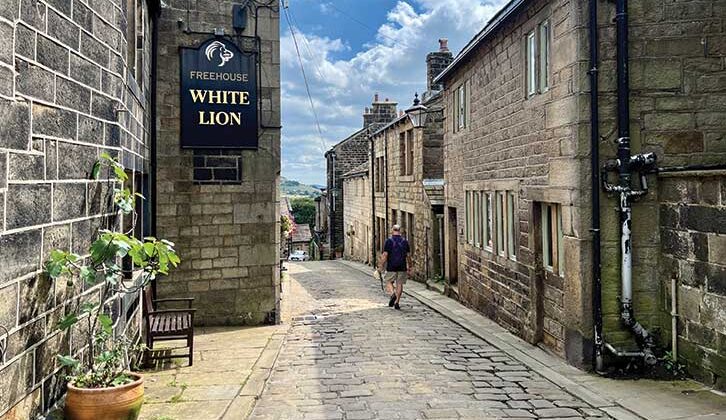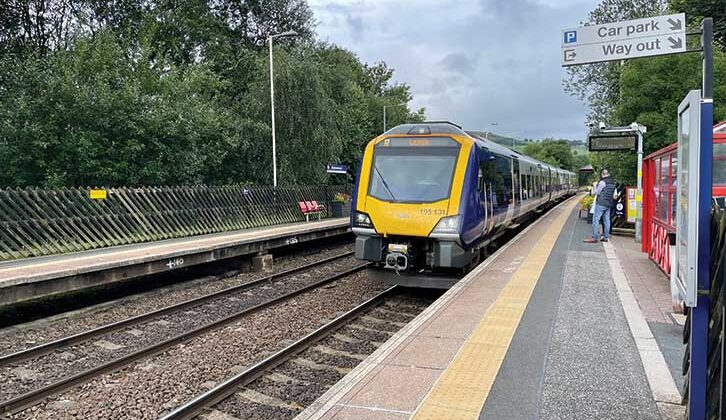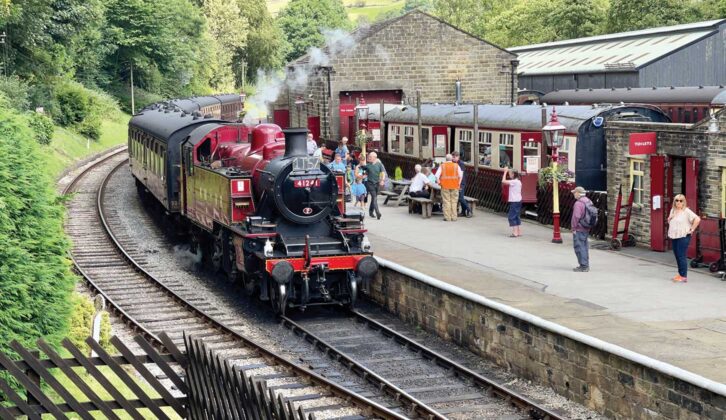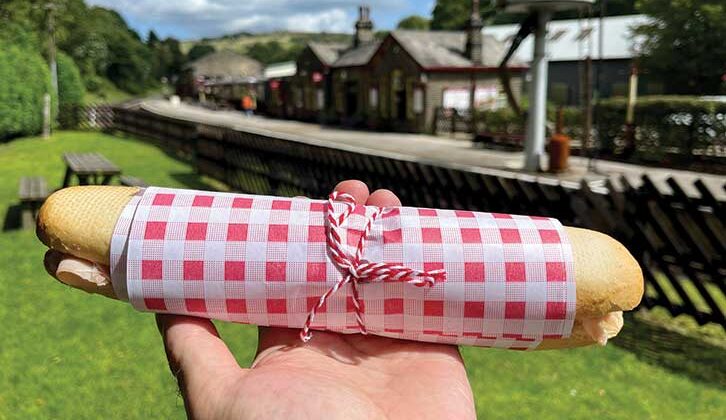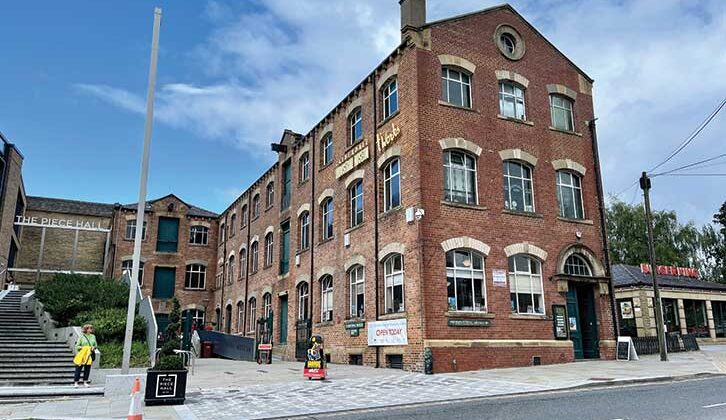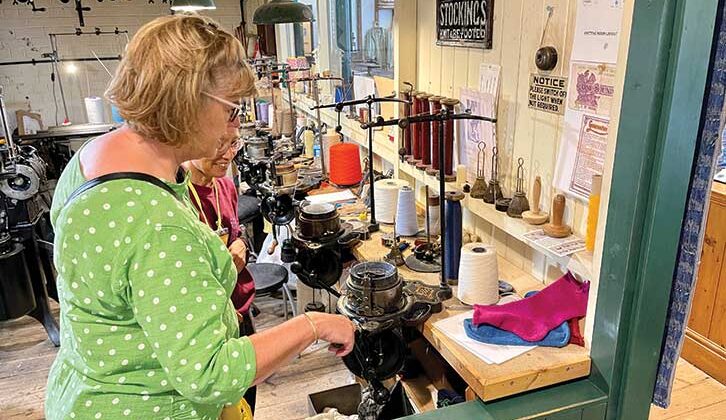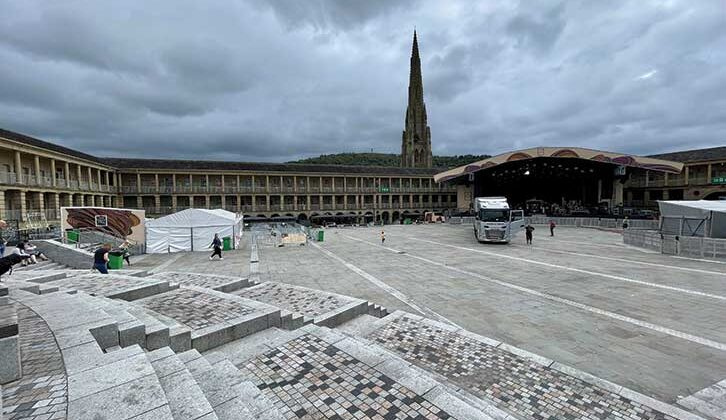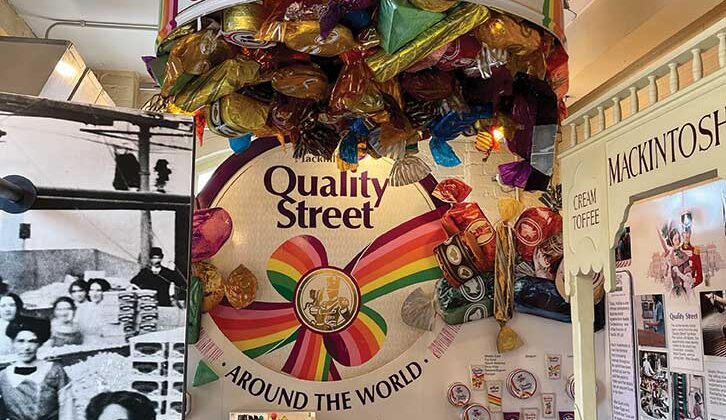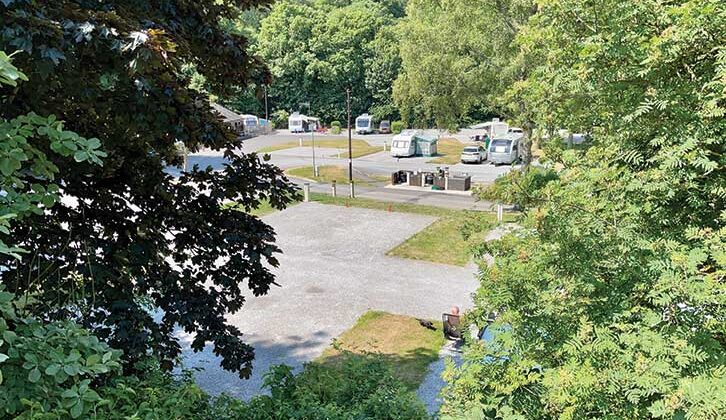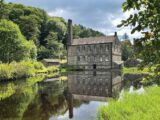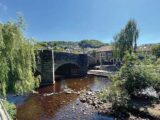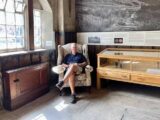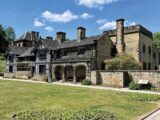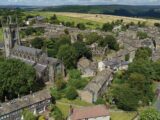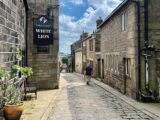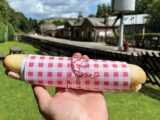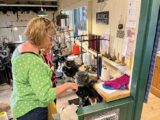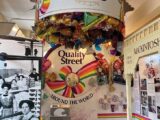A little while ago I was working in Halifax and, rather than staying overnight in a hotel or travelling home each day, Kay and I decided to take the caravan to Hebden Bridge Caravan & Motorhome Club Site, which is on the outskirts of Mytholmroyd, for the few days that I would be needed there.
The pleasant walk from the site to the railway station (catching the train to Halifax was far cheaper and easier than driving and trying to find somewhere to park) took me past an intriguing commemorative stone, which was inscribed ‘Mytholmroyd – Coiners Country’.
On that visit, we didn’t really have time to explore the area, nor to find out what ‘Coiners Country’ meant. However, when we got home, a quick internet search revealed that the Coiners were basically criminals (initially understandably, as they were starving) who, one way or another, shaved little bits off legitimate coins to make counterfeit copies, and thus boost their own income illegally.
Coincidentally, we had seen adverts for a BBC series, The Gallows Pole, which turned out to be all about the Coiners in Calderdale. A return visit to explore Calderdale was now a must and luckily we knew the best caravan park for the job!
After an easy drive from home in our Land Rover Discovery, we once again arrived at the Hebden Bridge CAMC site and were soon set up in our Coachman Laser 575 Xtra. It was a glorious day, so we decided to make the most of the afternoon with a quick trip into Hebden Bridge itself.
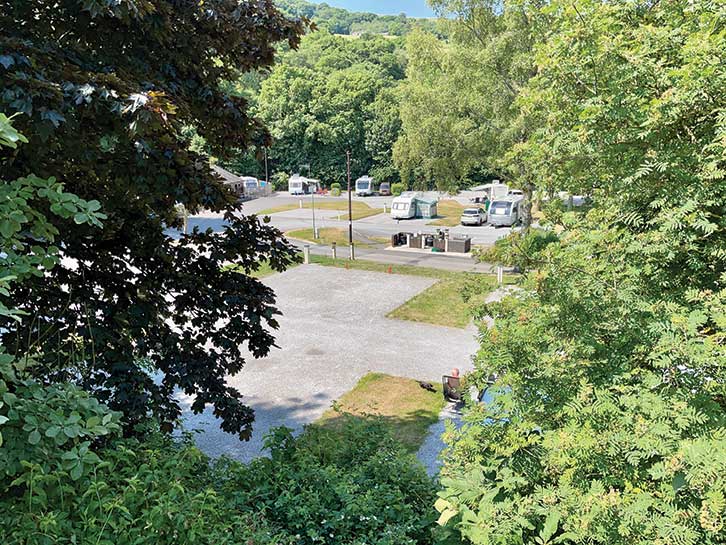
The industrial heritage of Calderdale
Before visiting Calderdale, it would have been quite easy to imagine the area as the inspiration for William Blake’s great poem ‘Jerusalem’, especially the bit about “dark Satanic Mills”, when you consider just how much industry grew up around here during the years of the Industrial Revolution – but these days, this is a region that is simply packed with historic beauty.
Hebden Bridge, for example, is a thriving market town, where the former mills have been turned into retail outlets or other businesses. Hebden Beck flows through the centre of town and into the River Calder, and almost where the waters meet, the river is crossed by an aqueduct for the Rochdale Canal.
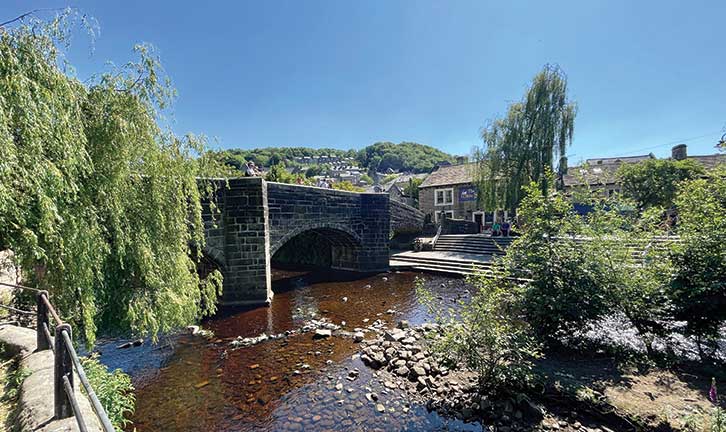
After a pleasant wander around this charming town, we stopped to enjoy a drink sitting outside one of the cafés in the market square, just watching the world go by and soaking up the sunshine.
Historic architecture
The following day, we were once again blessed with glorious sunshine, so we decided to visit Shibden Hall, near Halifax. There’s ample parking in either of the two car parks, although both are quite a way from the Hall. If you’re a Blue Badge holder, limited parking is available adjacent to the Hall.
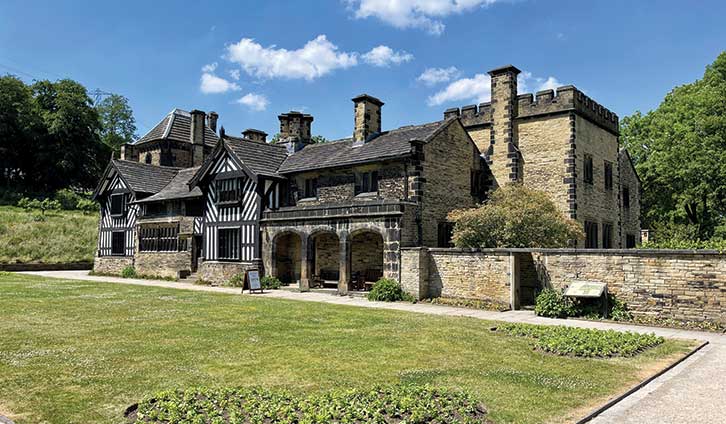
Parking in the top car park (off Shibden Hall Road), we walked to the café (past the Hall and the drystone wall exhibition) in the valley bottom. After a coffee, it was time to visit the Hall proper.
Shibden Hall dates all the way back to 1420, and over the years, has been extended and remodelled, making it a mixture of architectural styles. Passing through the various rooms, you’re given an insight into past occupants’ lives, and none more so than the famed diarist Anne Lister, the woman on whom the TV series Gentleman Jack was based. The Hall was
used in the filming of the series.
Returning to the comfortable caravan, it would have been easy to sit back and do nothing, but after a reviving cup of Yorkshire Tea (we couldn’t drink anything else here, could we?), we decided to take a brief circular stroll by Cragg Brook, which runs at the back of the site (our guide for the top sites for river and canal walks is worth a look if you’d like a stroll by water).
Mills and waterfalls
Although we didn’t wake to blue skies next day, it was still fine and warm, so we made the short drive to visit Gibson Mill and Hardcastle Crags.
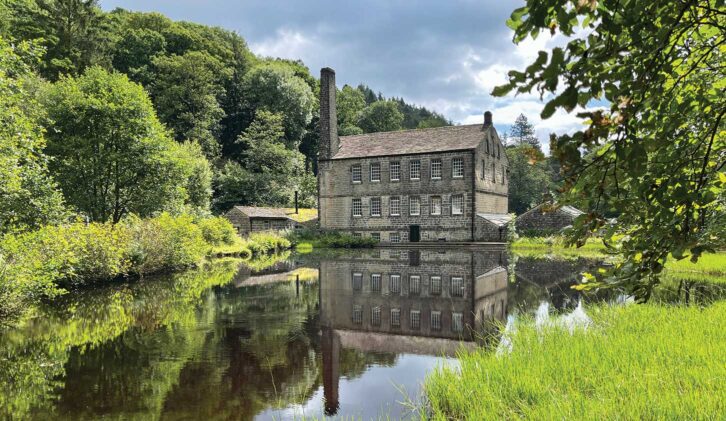
We parked at Clough Hole car park, which is the closest to the mill, but involves a steep climb down (and back up!) – so for the less able, parking at the Midgehole car park would probably be convenient, as this is not only flatter, but also on a made track.
Of course, we started our visit in the café, and after that, wandered around the 19th-century cotton mill; the latter is totally off-grid, the electrical power being generated by a self-contained hydroelectric turbine.
Although there’s not a lot to see inside the mill building itself, there are endless scenic walks in the valley. There are several waterfalls, and some stepping stones. Guess who couldn’t resist going over those?
Coiner connections
On our previous visit to the area, someone suggested that we might visit the village of Heptonstall. As we’d passed it en route to Clough Hole car park, we decided to stop off there on our way back.
Entering Heptonstall along cobbled streets (and a steep hill), we parked at the Bowling Club and walked back into the village centre.
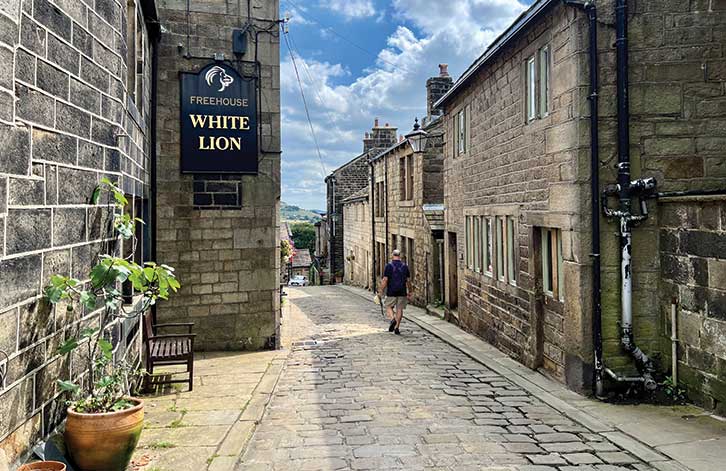
Heptonstall’s original Church of St Thomas a’ Becket was built around 1260, but was badly damaged by a gale in 1847. It’s now a ruin, with quite an eerie feeling to it. Right next door is the ‘new’ church of St Thomas the Apostle, built as a replacement in 1854.
The great American poet, Sylvia Plath, is buried in the ‘new’ graveyard here. Going back to the Coiners, ‘King’ David Hartley, the founder of the Cragg Vale Coiners, is buried in the ‘old’ graveyard. He was hanged near York in 1770, but his wife was allowed to have him buried at Heptonstall. It is thought the coining activity put into circulation some £3.5m-worth of counterfeit coins – the equivalent of £490m in today’s money.
Next door to the church is Heptonstall Museum, which is well worth the modest entrance fee. It tells the story of the Cragg Vale Coiners and has a number of interesting artifacts from that time. The building was also used in the filming of The Gallows Pole. It was fascinating to read about the events leading up to the capture (and execution) of the Coiners.
We spent a lovely hour or two in Heptonstall, wandering around the narrow streets and enjoying refreshments at the Towngate Tearoom. Heptonstall is high up on the hillside, so you get a fabulous view of Hebden Bridge, down in the valley, from the playing field next to the Bowling Club where we’d parked.
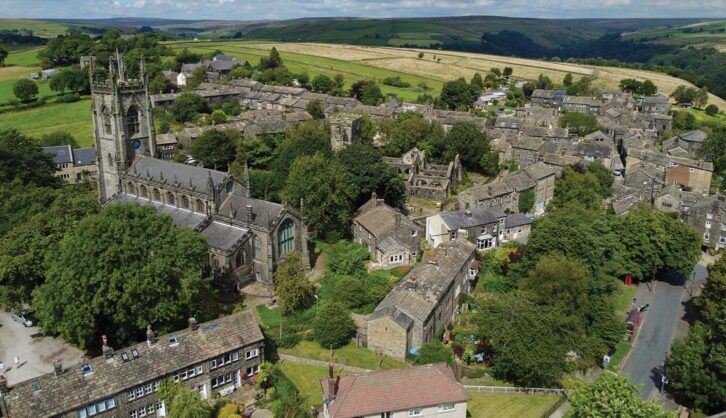
Heading for Haworth
We planned to visit nearby Haworth, and the Keighley & Worth Valley Railway (K&WVR), the following day. Unless you feel the desire for some quite strenuous exercise, I’d recommend that you park at the Brontë Village Coach and Car Park, at the top of Weavers Hill in Haworth. From there, it’s a short stroll to the main attractions of the village – the Parsonage, the church and the cafés and shops on Main Street. Owing to the long queues, we didn’t go into the Parsonage on this occasion, but we have been before.
This interesting local museum tells the story of the Reverend Patrick Brontë, who brought his family to Haworth in 1820. His daughters, Charlotte, Emily and Anne, were to become world-famous writers.
Charlotte has a connection with Kay’s home village, Hathersage in the Derbyshire Peak District, where she stayed with her friend at the vicarage and visited nearby North Lees Hall several times.
North Lees Hall is thought to be the inspiration for Thornfield, the home of Mr Rochester in Charlotte’s 1847 novel, Jane Eyre. Coincidentally, Eyre is a common name in the Hope Valley, where Hathersage lies.
Heritage steam trains
After enjoying a coffee outside Café Verde in Haworth, I walked down to the railway station at the bottom of the hill, to await the arrival of a steam train on the K&WVR heritage line. Kay sensibly decided on a steady meander around the village at the top of the hill.
Although the spectacle of the steam train was worth the effort, it was a hard slog back up the steep cobbled street to meet Kay. She’d thoughtfully bought us some delicious baguettes for lunch, and after returning to the car and making the short but scenic drive to Oxenhope Station (the end of the line for the K&WVR), we stopped to enjoy those baguettes at a picnic table while awaiting the arrival of our train.
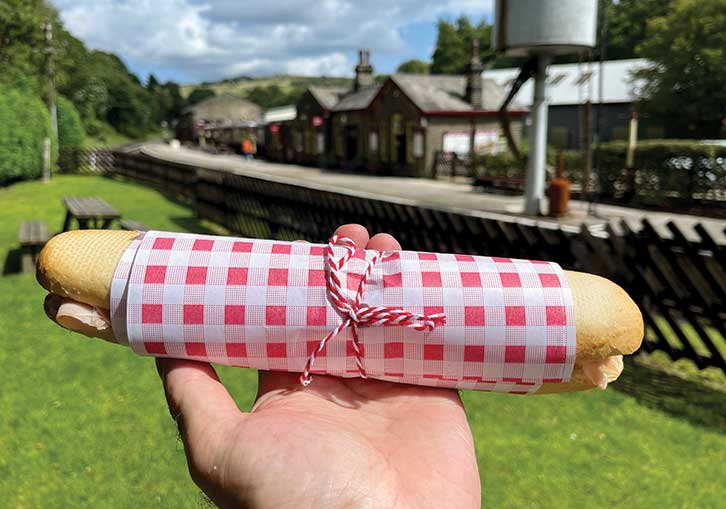
The K&WVR runs for five miles between Oxenhope and the industrial town of Keighley. It was really put on the map by the much-loved 1970 film The Railway Children, starring Jenny Agutter and Bernard Cribbins, a great deal of which was filmed in the area.
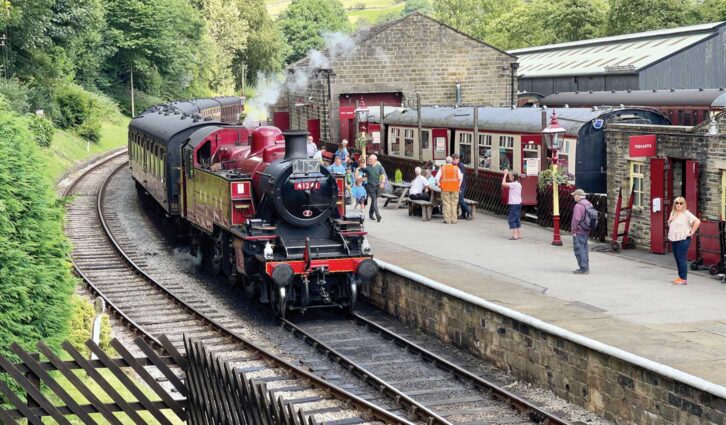
Transport museums
As we had a Day Rover ticket, we could get on and off the trains as we pleased. Initially, we rode the length of the line to Keighley, where we stopped for a drink in the station café. After watching the locomotive take on water, we hopped on for the short ride to Ingrow West Station, where you can also explore the Vintage Carriages Trust Museum and the Engine Shed.
As time was running out for us, however, we caught the train to Oxenhope and drove back to the site. The next day, it was a gentle walk of about a mile to the railway station in Mytholmroyd (there’s a large, free car park for those feeling less energetic), Halifax being our intended destination.
As we left the train station in Halifax, we passed Eureka! The National Children’s Museum, a hugely popular attraction for youngsters. Kay and I decided to give it a miss (we weren’t sure how a pair of nearly pensioners would get on!), and took the very short walk to The Piece Hall instead. Set in a splendid quadrangle, this is the only surviving Georgian
cloth hall in the world, dating from 1779.
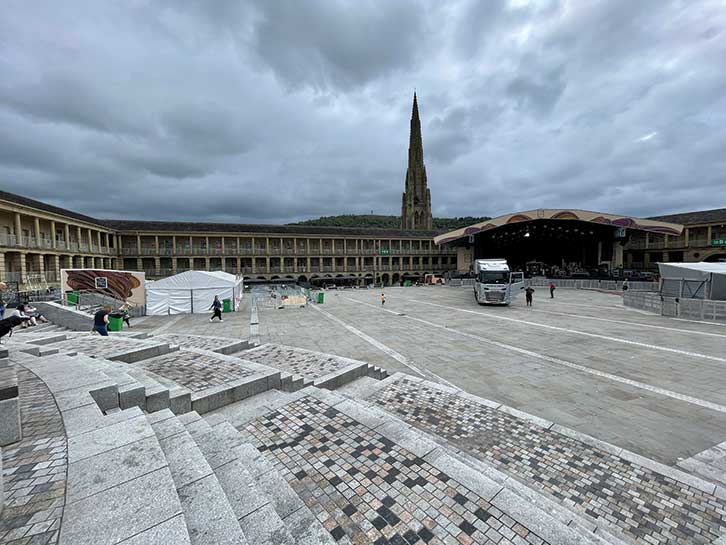
amid preparations for a performance
The cloth hall was where ‘pieces’ of cloth (30-yard lengths of woollen fabric produced on a handloom) were traded. Today, it houses numerous cafés, bars and other retail outlets, as well as being a very popular venue for concerts and events. Indeed, when we were there, the stage and lighting were being set up for a concert that evening. One day, we might be able to see it without the staging and scaffolding!
Textiles and chocolates
Just next door to The Piece Hall is the fascinating Calderdale Industrial Museum. This is housed in a former warehouse over four floors and recounts the history of the important industries in this region, from weaving to the manufacture of sweets (Quality Street and After Eight are still made in Halifax; you can see the factory from the station!), from the invention of the cat’s eyes in the centre of our roads to heavy machinery for mining and steam engines.
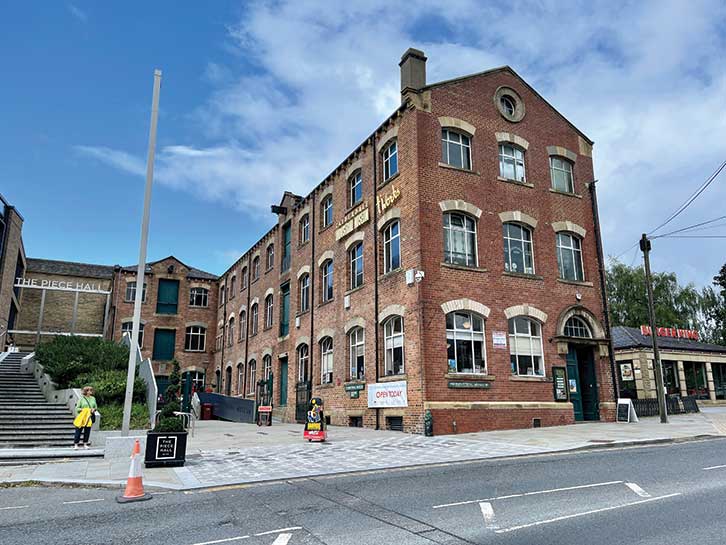
Kay tried out an old handloom, and thanks to help from volunteer Polly, added a few rows to a splendid Harry Potter scarf. She also had a go at knitting socks on an ingenious little machine. The museum is a great place to spend an hour or so; it has a good café, too.
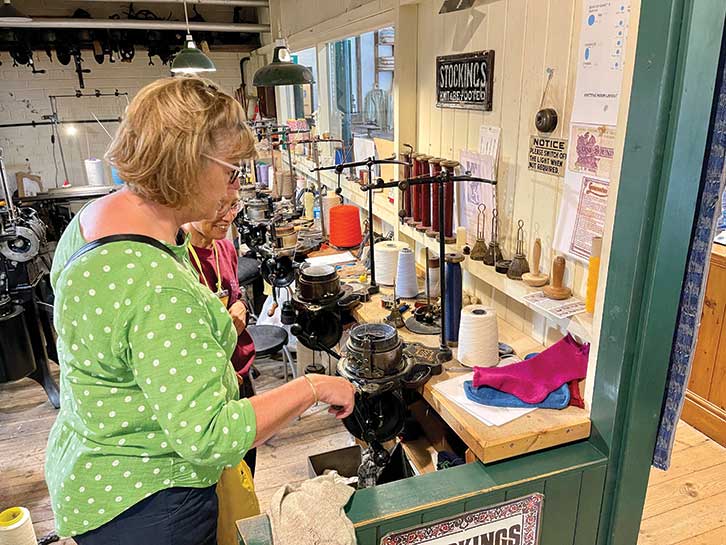
I had planned to do the five-mile round walk from the campsite to the Stoodley Pike monument, built to mark the end of the Crimean War, but sadly I had the wrong clothing for the bad weather on our final day.
Among the many places we hoped to visit, there’s a traditional clog-maker in Mytholmroyd that looked interesting – but time ran away with us. Our trips in the caravan always come to an end far too soon, and we had barely scratched the surface of what there is to see and do here. Luckily, Calderdale isn’t too far from home, so we’re now planning a return visit.
Wondering where to go on your next tour? Take a look at our guide to the standout caravan parks in the Heart of England for ideas. Alternatively, our guide to the best caravan parks in Dorset will help you find the right campsite if you want to visit this picturesque region instead.
Planning a trip to Calderdale
Way to go to Calderdale
Turn off of the A646 in Mytholmroyd and onto the B6138 (signposted Rochdale, Littleborough, Cragg Vale). The site is on the right in one mile. If using the M62, you are advised not to leave at J22 because this involves an awkward corner at the A672/A58 junction.
Where we stayed
Hebden Bridge CAMC Campsite
Address: Cragg Vale, Hebden Bridge HX7 5RU, 01422 882 531
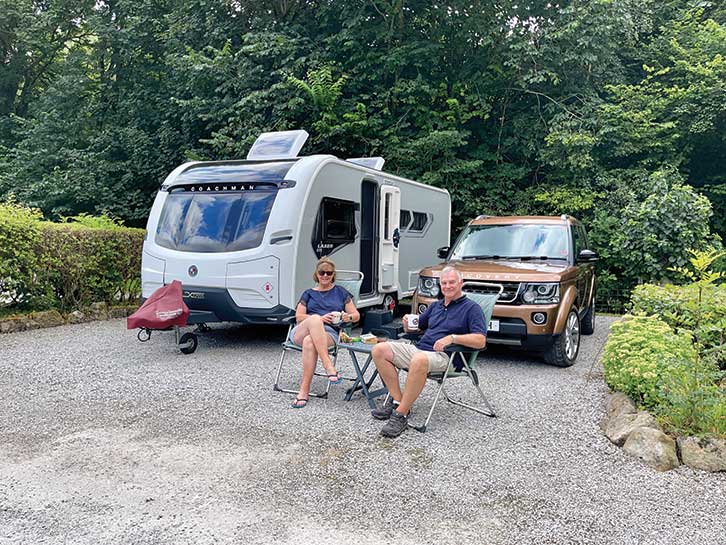
- Open: 15 March to 4 November 2024
- Pitches: 42
- Charges (pitch+2+hook-up): From £23.40 (members)
Hebden Bridge CAMC Campsite is set in a valley, with Cragg Brook running past the back of the site, surrounded by woods. It has 42 hardstanding pitches, many individually separated by shrubs.
The site is immaculate and each pitch has EHU and a TV point, but there is no toilet block.
Non-members are also welcome at the campsite.
Find out more about Calderdale
- Visit Calderdale
- Cragg Vale Coiners
- Shibden Hall
- Gibson Mill and Hardcastle Crags
- Heptonstall Museum
- Haworth
- Brontë Country
- Keighley & Worth Valley Railway
- Vintage Carriages Trust
- Eureka! The National Children’s Museum
- The Piece Hall, Halifax
- Calderdale Industrial Museum
If you’ve enjoyed reading this article, why not get the latest news, reviews and features delivered direct to your door or inbox every month. Take advantage of our brilliant Practical Caravan magazine SUBSCRIBERS’ OFFER and SIGN UP TO OUR NEWSLETTER for regular weekly updates on all things caravan related.
